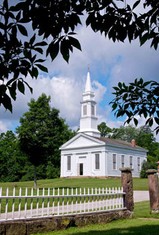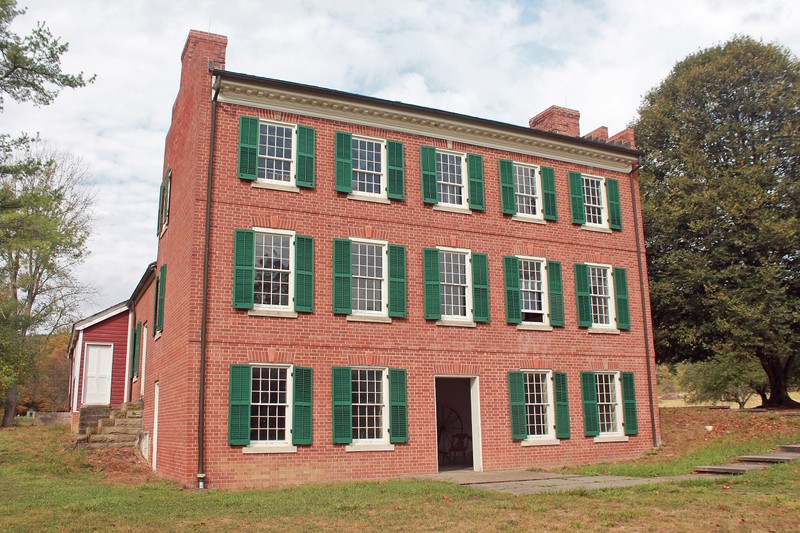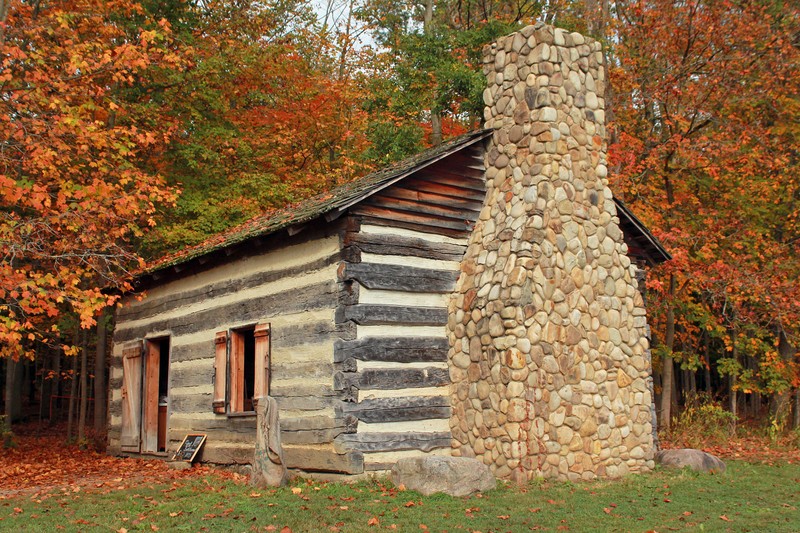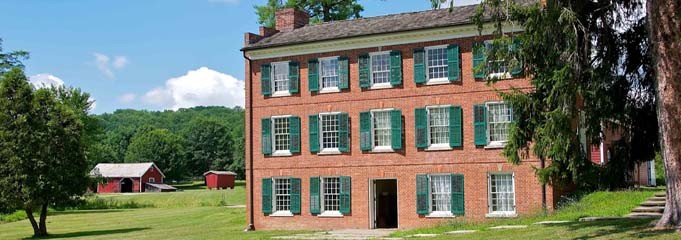Hale Farm & Village
Introduction
Text-to-speech Audio
Images




Backstory and Context
Text-to-speech Audio
Jonathan Hale purchased 500 acres in the Cuyahoga Valley from the Connecticut Land Company in 1810, a portion of land known as the Western Reserve. That same year, he made the 600-mile journey to his family's new property, and found a squatter living there. But after trading his horses and wagon to the squatter for the cabin the squatter had built, he began clearing the land, and it wasn't long before the rest of the Hale family arrived.
Among the buildings on the site is the original Hale House, built in 1825, with modifications made in 1830 and 1840. The three-story house features a gable roof and chimneys on both the south and north ends. There have been few major changes to the building, which is on the National Register of Historic Places. According to the NRHP, "It bespeaks the life and livelihood of a pioneer family whose accounts, letters, diaries and other papers are preserved and available to the public."
Clara Belle Richie, great-granddaughter to Jonathan Hale, bequeathed the farm to the Western Reserve Historical Society in 1956. In her words, “Hale Farm is to be established as a museum so that the greatest number of persons might learn about the history and culture of the Western Reserve.” It opened in 1958. At first, the museum consisted of the family home and a barn that displayed old farming equipment, but the site quickly transformed.
Schoolchildren and families came from all over to learn about traditional farming methods and traditional crafts. The site transformed from a family farm to a living history museum, and a historic village was late constructed. The recreated village is called Wheatfield.
Over the next 30 years, historic structures were moved to the site to preserve the history of the Western Reserve as well as offer space so that people see hundreds of collection pieces kept and preserved by the Western Reserve Historical Society.
Sources
History of Hales, Western Reserve Historical Society. Accessed June 8th 2020. https://www.wrhs.org/history-of-hales/.
Hale House, National Register of Historic Places. Accessed June 23rd 2020. https://npgallery.nps.gov/NRHP/GetAsset/03b9a7ef-e9b9-478c-a557-18fdf156857d.
Franklin Clark
Franklin Clark
